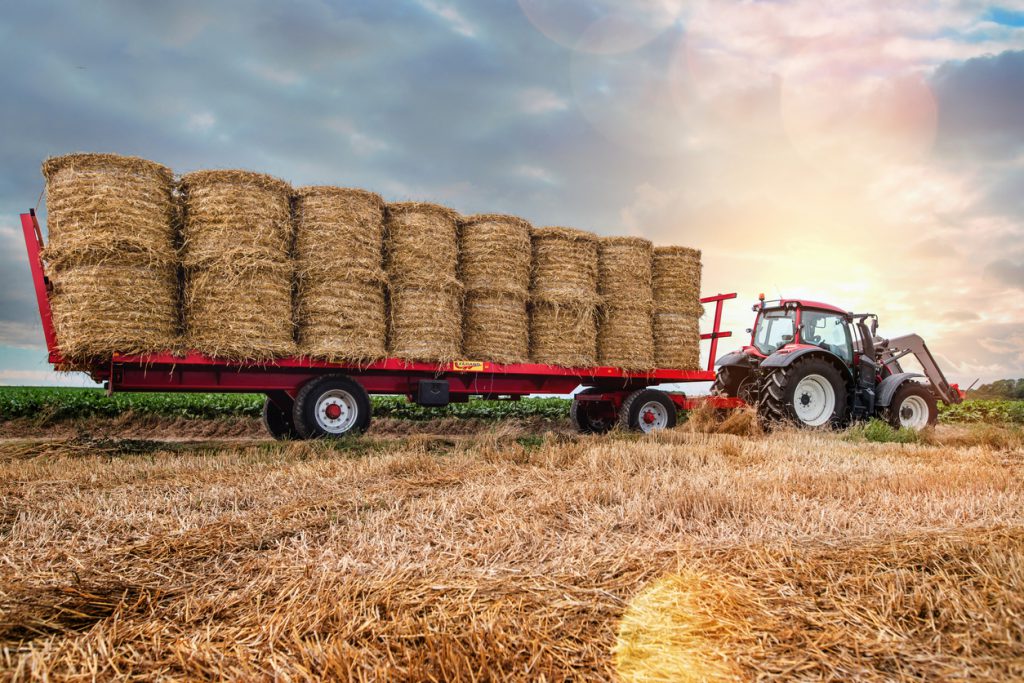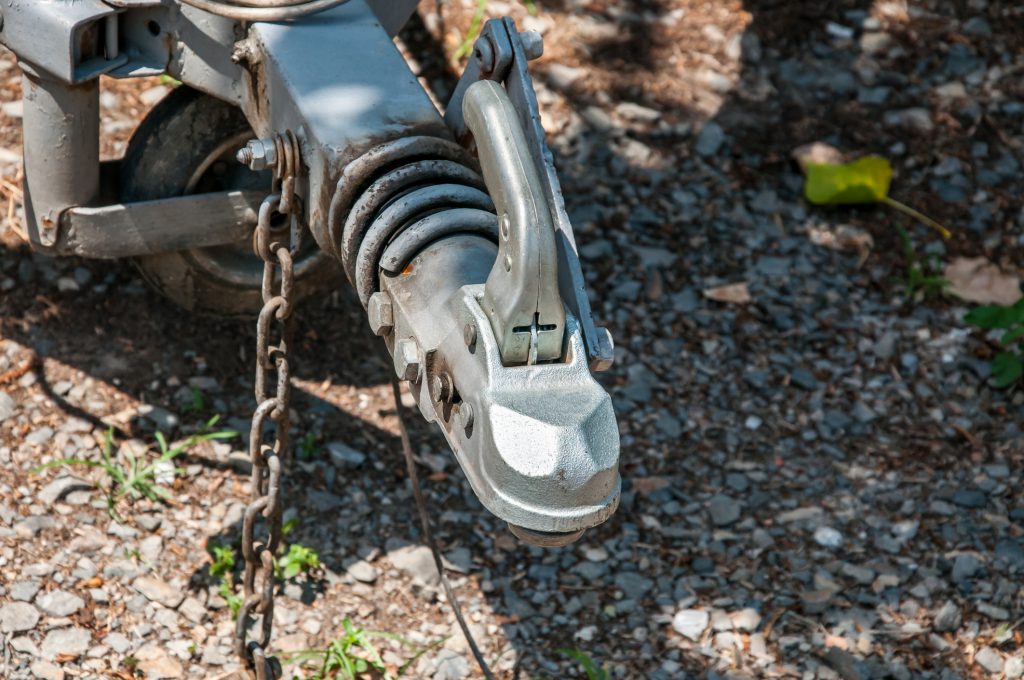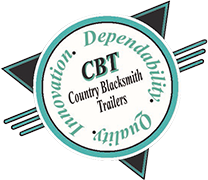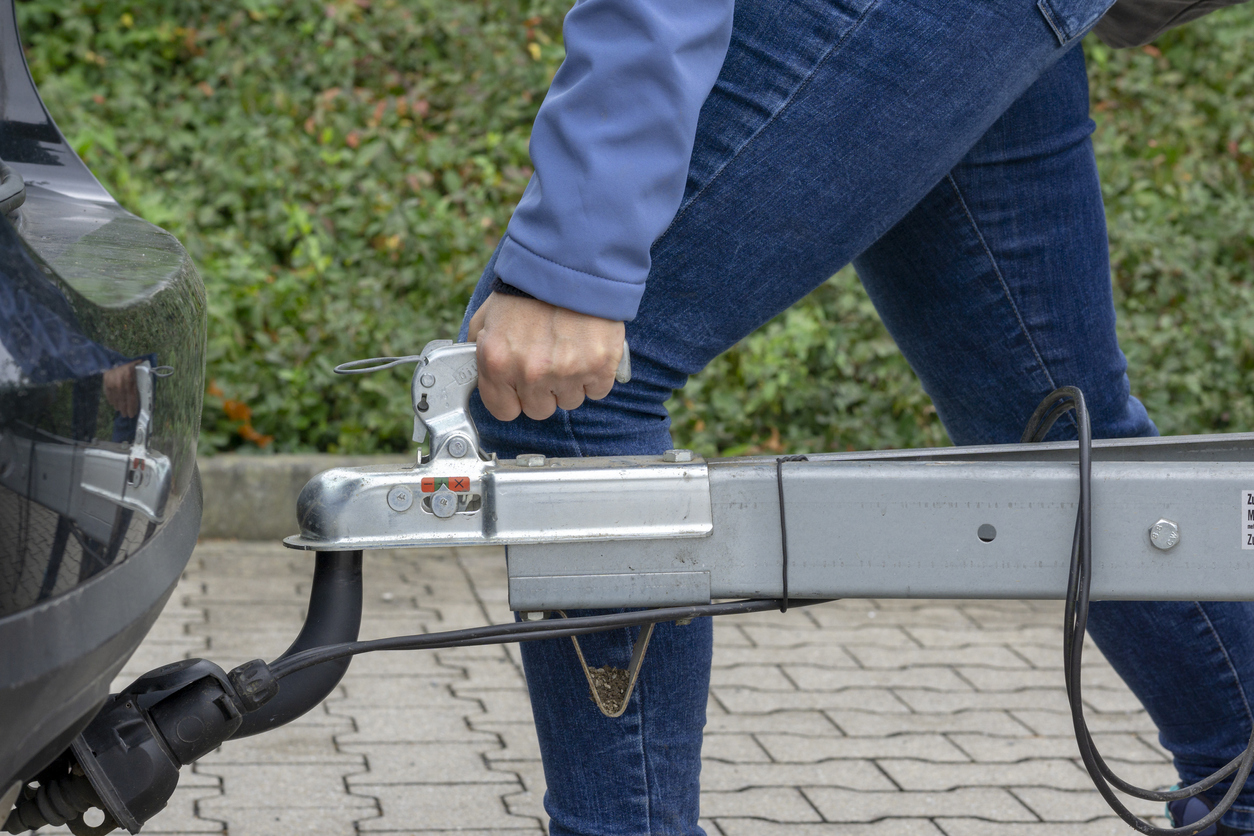When choosing a trailer, you have a long list of decisions to make – size, type, material, weight rating and more. It’s a lengthy process, but you want to make sure the trailer you invest in will be perfect for you. To help you get started on the decision-making process, we put together this guide to different types of trailer hitches. Once you know what type of trailer you want, you need to decide which hitch type you need. Here at Country Blacksmith, we want to make sure you have the right trailer for the tow vehicle you own and the work you need done. So, we’re going through the most common hitch types, how they work, and the pros and cons.

Pintle Hitch
Another heavy-duty towing hitch is the pintle hitch, often used on rough terrain. The hooking system, called the pintle, is attached to the truck. The lunette, the main ring the pintle hooks to, is attached to the trailer. Pintle hitches are often used in industrial, military and agricultural settings. They can handle a lot of weight and allow for a large range of motion, making them ideal for bumpy, off-road terrain.
Rear Receiver Trailer Hitch
A very common type of truck hitch, the rear receiver trailer hitch is used mostly in personal, not commercial, settings. It consists of a classic square receiver tube with almost endless attachment options. These hitches mount directly to the vehicle frame, and weight ratings are made on a scale from 1 to 5. The weight rating and the size of the receiver tube varies. Our trailer experts at Country Blacksmith can help you decide how heavy duty your hitch needs to be.
Front Mount Hitch
Similar to the rear receiver hitch is the front mount hitch. This hitch, obviously, connects to the front of your vehicle. It bolts directly to the tow vehicle frame and gives you a receiver in the front with a variety of options, much like the rear receiver hitch. The front mount hitch can be used to insert a cargo carrier, install a snow plow, mount a spare tire, or park your trailer in a tight place.
Fifth Wheel Hitch
The fifth wheel hitch is used for heavy duty towing. It mounts over or slightly in front of the axles in the bed of the truck. It uses a kingpin mechanism to attach to the towing load. In fifth wheel hitches, the coupling system is a part of the hitch itself rather than part of the trailer.
The trailer weight is positioned between the cab and the rear axle with the fifth wheel hitch, so they can handle much heavier loads compared to traditional ball mount bumper hitches. These heavy-duty hitches are used for large campers, car haulers and semi-trucks. They’re designed to pivot easily, absorb sudden bumps on the road and increase your turn radius.
Gooseneck Hitch
A gooseneck hitch is similar to a fifth wheel hitch as it mounts in the bed of the truck directly above or slightly in front of the rear axles. They’re often used for towing livestock trailers, car haulers and other industrial trailers. They’re built to make much tighter turns compared to traditional bumper hitch trailers. They come in above-bed and under-bed styles, with above-bed being the most popular type of trailer hitch in the gooseneck family.

Bumper Hitch
A bumper hitch is the most basic industry standard. It uses a tow ball mount that attaches to the rear end receiver hitch, which is already mounted on the tow vehicle. The ball mount bumper hitch can be used on nearly every vehicle, trucks, SUVs and even some small sedans included. They come in many different sizes, styles and drop lengths. If you need a catch-all type of trailer hitch, a bumper hitch is probably the choice for you. If you need help with the specifics of your bumper hitch, based on your vehicle and trailer specs, our experts at Country Blacksmith are more than happy to give a recommendation.
Weight Distribution Hitch
Although similar to a bumper tow ball mount, the weight distribution hitch has more advanced features. They’re often used for travel trailers as they help keep the vehicle balanced and reduce trailer sway. Normally, when towing a trailer, most of the weight is held on the rear end of your tow vehicle. With a weight distribution hitch, the tongue weight is lifted from the rear axle and spread evenly to the other axles.
The weight distribution hitch works much like a wheel barrow. It uses spring arms, like the wheel barrow handles, to lift and leverage the weight on the rear end of the tow vehicle. This distributes the weight onto the other axles and increases the balance of the trailer while reducing the stress on the back and of your tow vehicle.
Whether you’re looking for hitch or trailer advice, our team at Country Blacksmith Trailer Sales will be happy to assist. We carry a large variety of trailers and our experts are available for any questions. Shop for your new trailer online or in person today!

